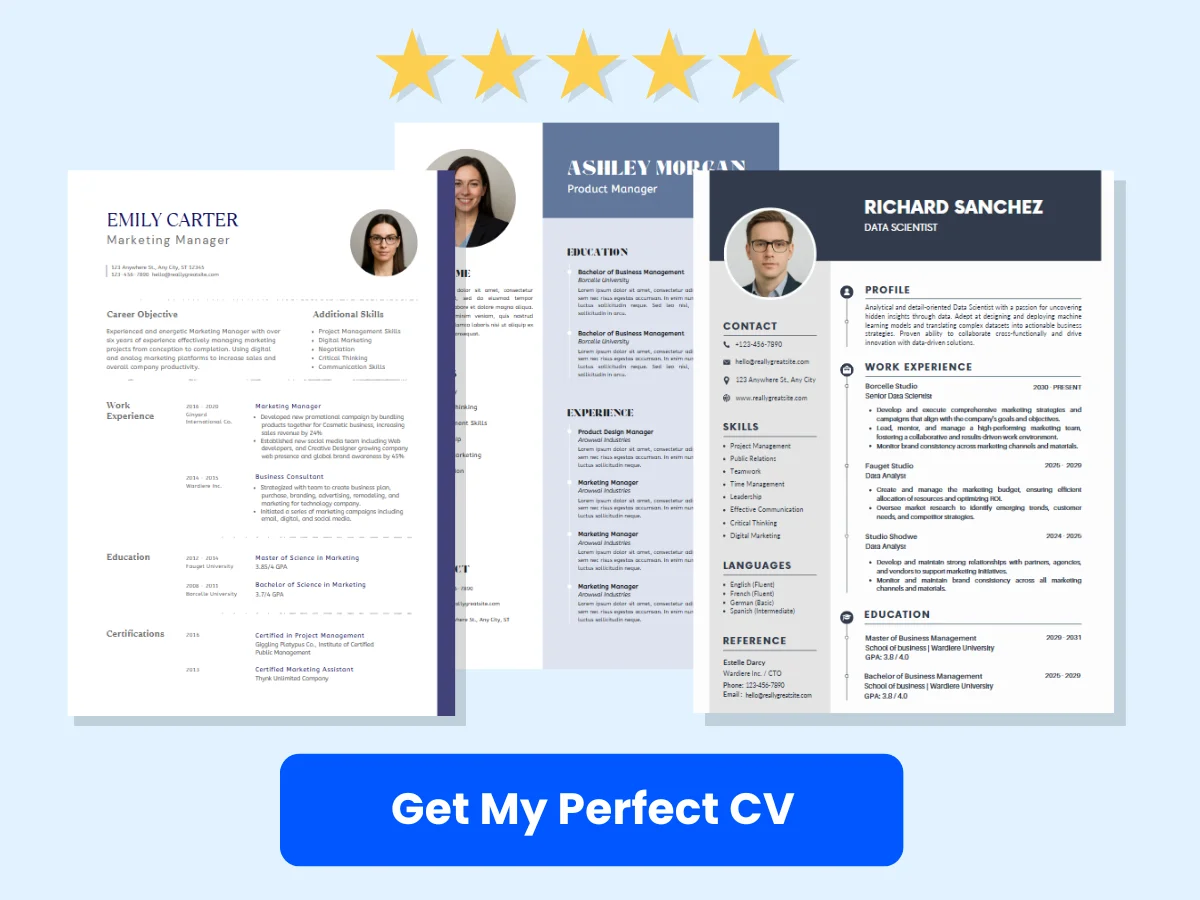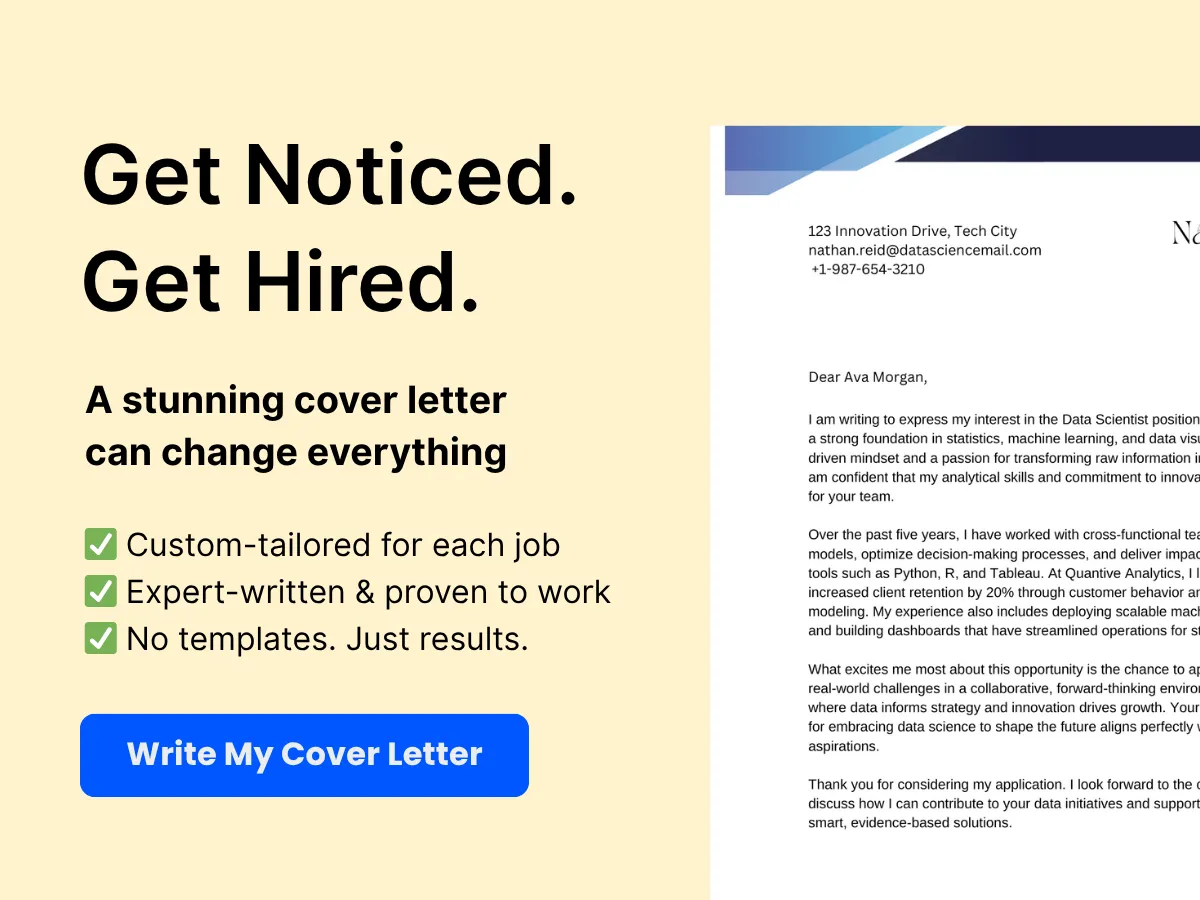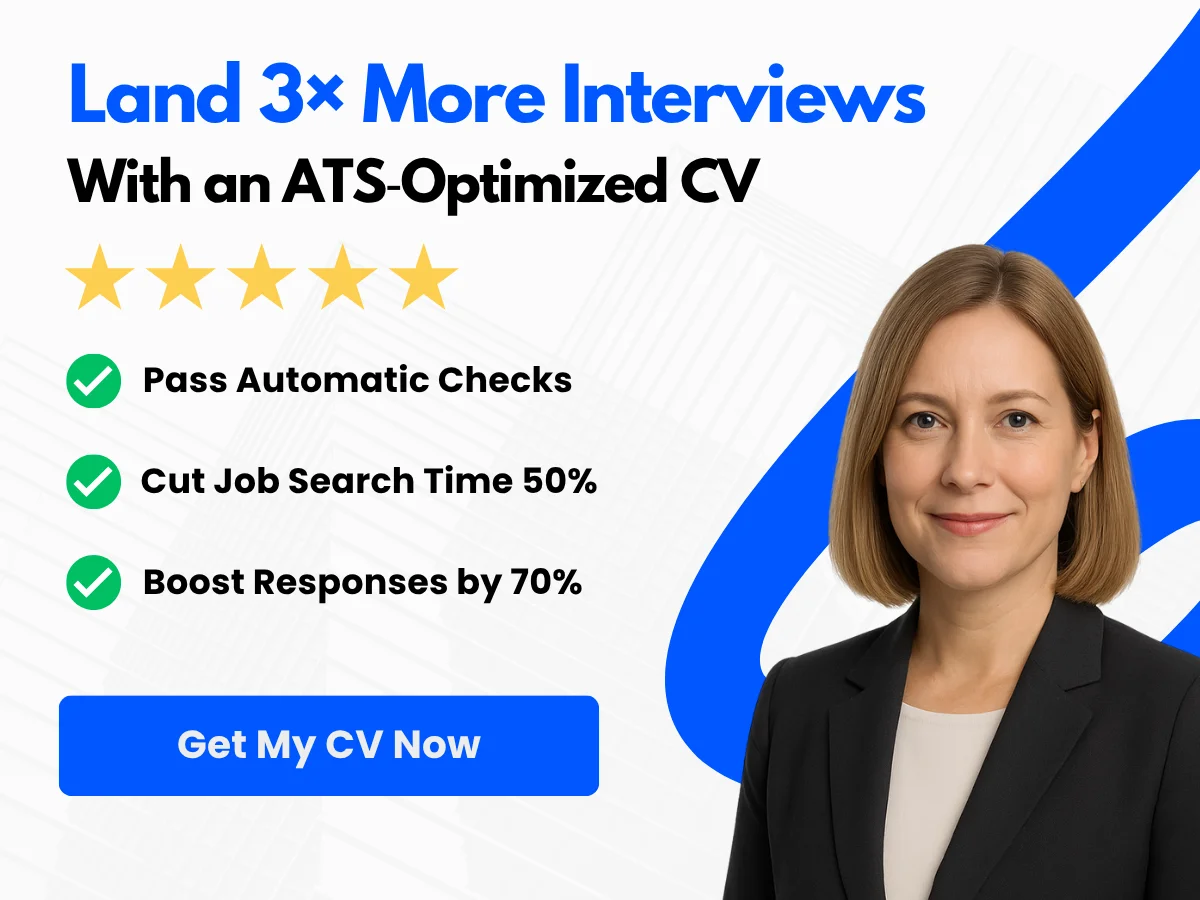The role of Human Resource Management (HRM) has transcended traditional boundaries, emerging as a pivotal function that drives organizational success. HRM encompasses a wide array of practices and strategies aimed at optimizing the workforce, fostering a positive workplace culture, and aligning human capital with the overarching goals of the organization. As companies navigate challenges such as talent acquisition, employee engagement, and regulatory compliance, understanding the core objectives of HRM becomes essential.
The importance of effective HRM cannot be overstated. It not only influences employee satisfaction and retention but also plays a crucial role in enhancing productivity and innovation. In an era where the competition for top talent is fierce, organizations that prioritize strategic HRM are better positioned to attract and retain skilled professionals, ultimately leading to sustainable growth and success.
In this article, we will delve into the top 10 objectives of Human Resource Management, providing insights into how these goals contribute to the overall effectiveness of an organization. Readers can expect to gain a comprehensive understanding of each objective, its significance, and practical implications for fostering a thriving workplace. Whether you are an HR professional, a business leader, or simply interested in the dynamics of workforce management, this exploration will equip you with valuable knowledge to enhance your organizational practices.
Recruitment and Selection
Recruitment and selection are critical components of Human Resource Management (HRM) that directly influence an organization’s success. The process involves identifying talent needs, sourcing candidates, screening and interviewing applicants, and finally onboarding new hires. Each of these steps plays a vital role in ensuring that the right individuals are brought into the organization, aligning with its goals and culture.
Identifying Talent Needs
The first step in the recruitment process is identifying the talent needs of the organization. This involves a thorough analysis of the current workforce, understanding the skills and competencies required for various roles, and forecasting future hiring needs based on business objectives.


To effectively identify talent needs, HR professionals often conduct a workforce analysis. This analysis includes:
- Job Analysis: A detailed examination of job roles to determine the necessary skills, qualifications, and experience required.
- Performance Reviews: Evaluating current employees to identify skill gaps and areas for development.
- Future Planning: Collaborating with management to understand upcoming projects or expansions that may require additional talent.
For example, if a tech company plans to launch a new software product, the HR team must identify the need for software developers, project managers, and quality assurance testers. By understanding these needs, HR can create targeted recruitment strategies to attract the right candidates.
Sourcing Candidates
Once the talent needs are identified, the next step is sourcing candidates. This involves finding potential applicants through various channels. Effective sourcing strategies can significantly enhance the quality of candidates and reduce time-to-hire.
Common sourcing methods include:
- Job Boards: Posting job openings on popular job boards like Indeed, Glassdoor, and LinkedIn to reach a wide audience.
- Social Media: Utilizing platforms like LinkedIn, Facebook, and Twitter to engage with potential candidates and promote job openings.
- Employee Referrals: Encouraging current employees to refer qualified candidates, often incentivized with referral bonuses.
- Recruitment Agencies: Partnering with external agencies that specialize in finding candidates for specific roles or industries.
- Networking Events: Attending industry conferences, job fairs, and networking events to connect with potential candidates in person.
For instance, a healthcare organization may attend a nursing career fair to meet and engage with nursing graduates, while also posting job openings on specialized healthcare job boards. This multi-faceted approach ensures a diverse pool of candidates.
Screening and Interviewing
After sourcing candidates, the next phase is screening and interviewing. This step is crucial for narrowing down the candidate pool to those who best fit the job requirements and organizational culture.


The screening process typically involves:
- Resume Screening: Reviewing resumes and cover letters to shortlist candidates based on qualifications and experience.
- Pre-Employment Assessments: Utilizing tests or assessments to evaluate candidates’ skills, personality traits, and cultural fit.
- Phone Interviews: Conducting initial phone interviews to gauge candidates’ interest and clarify any questions regarding their resumes.
Once candidates are shortlisted, the formal interview process begins. This can include:
- Structured Interviews: Using a standardized set of questions to ensure consistency and fairness in evaluating candidates.
- Behavioral Interviews: Asking candidates to provide examples of past experiences that demonstrate their skills and competencies.
- Panel Interviews: Involving multiple interviewers from different departments to gain diverse perspectives on the candidate.
For example, a marketing firm may conduct a panel interview with team members from marketing, sales, and HR to assess a candidate’s fit for a marketing manager position. This collaborative approach helps ensure that the selected candidate aligns with the expectations of various stakeholders.
Onboarding and Orientation
Once a candidate is selected, the final step in the recruitment and selection process is onboarding and orientation. Effective onboarding is essential for integrating new hires into the organization and setting them up for success.
The onboarding process typically includes:


- Pre-Onboarding: Sending welcome emails, providing necessary paperwork, and sharing information about the company culture before the new hire’s first day.
- Orientation Programs: Conducting orientation sessions to introduce new employees to the organization, its values, policies, and procedures.
- Training and Development: Providing role-specific training to equip new hires with the skills and knowledge needed to perform their jobs effectively.
- Mentorship Programs: Pairing new employees with experienced mentors to guide them through their initial days and help them acclimate to the company culture.
For instance, a financial services company may have a structured onboarding program that includes a week-long orientation, training sessions on compliance and regulations, and regular check-ins with HR and team leaders. This comprehensive approach helps new hires feel welcomed and supported, ultimately leading to higher retention rates.
The recruitment and selection process is a multifaceted endeavor that requires careful planning and execution. By effectively identifying talent needs, sourcing candidates, screening and interviewing, and providing a robust onboarding experience, organizations can build a strong workforce that drives success and fosters a positive workplace culture.
Training and Development
Training and development are critical components of Human Resource Management (HRM) that focus on enhancing the skills, knowledge, and competencies of employees. This process not only contributes to individual growth but also aligns with the organization’s strategic goals. We will explore the various aspects of training and development, including assessing training needs, designing training programs, implementing training initiatives, and evaluating training effectiveness.
Assessing Training Needs
The first step in the training and development process is to assess the training needs of employees. This involves identifying gaps between the current skills of employees and the skills required to meet organizational objectives. Effective assessment can be achieved through various methods:
- Surveys and Questionnaires: Distributing surveys to employees can help gather insights about their perceived training needs. Questions can focus on areas where they feel less confident or require additional knowledge.
- Performance Appraisals: Regular performance reviews can highlight areas where employees may be underperforming, indicating a need for targeted training.
- Interviews and Focus Groups: Conducting one-on-one interviews or focus group discussions with employees and managers can provide qualitative insights into training needs.
- Job Analysis: Analyzing job descriptions and requirements can help identify the skills necessary for each role, allowing HR to pinpoint training needs based on job performance expectations.
For example, a technology company may find through performance appraisals that its software developers struggle with new programming languages. This insight would prompt HR to assess the specific training needs related to those languages, ensuring that the training is relevant and targeted.
Designing Training Programs
Once training needs have been assessed, the next step is to design effective training programs. This involves creating a structured approach that outlines the objectives, content, methods, and evaluation criteria for the training. Key considerations in this phase include:


- Setting Clear Objectives: Training programs should have specific, measurable objectives that align with both employee development and organizational goals. For instance, a program aimed at improving customer service skills might set an objective to increase customer satisfaction scores by 20% within six months.
- Choosing Training Methods: Various training methods can be employed, including on-the-job training, workshops, e-learning, simulations, and mentoring. The choice of method should consider the learning preferences of employees and the nature of the skills being taught.
- Developing Training Materials: High-quality training materials, such as manuals, presentations, and online resources, should be developed to support the training process. These materials should be engaging and relevant to the training objectives.
- Incorporating Feedback: Involving employees in the design process can provide valuable insights and increase buy-in. Gathering feedback on proposed training content and methods can help refine the program before implementation.
For instance, a healthcare organization might design a training program for nurses that includes hands-on workshops, online modules, and role-playing scenarios to enhance their patient interaction skills. By incorporating various methods, the program can cater to different learning styles and ensure comprehensive skill development.
Implementing Training Initiatives
Implementation is a crucial phase where the designed training programs are put into action. Successful implementation requires careful planning and coordination. Key steps include:
- Scheduling Training Sessions: Training sessions should be scheduled at convenient times to maximize participation. Consideration should be given to employees’ work schedules to minimize disruption to daily operations.
- Communicating the Training Program: Clear communication about the training program’s objectives, benefits, and logistics is essential. Employees should understand how the training will enhance their skills and contribute to their career development.
- Facilitating the Training: Skilled trainers or facilitators should lead the training sessions. They should be knowledgeable about the subject matter and capable of engaging participants through interactive methods.
- Providing Resources: Ensuring that participants have access to necessary resources, such as training materials and technology, is vital for a smooth training experience.
For example, a retail company may implement a customer service training initiative by scheduling sessions during off-peak hours, ensuring that all employees can attend without affecting store operations. By effectively communicating the importance of the training, employees are more likely to engage and participate actively.
Evaluating Training Effectiveness
The final step in the training and development process is to evaluate the effectiveness of the training initiatives. This evaluation helps determine whether the training objectives were met and identifies areas for improvement. Various evaluation methods can be employed:
- Pre- and Post-Training Assessments: Conducting assessments before and after the training can measure knowledge or skill gains. This quantitative data can provide clear evidence of training effectiveness.
- Feedback Surveys: Gathering feedback from participants through surveys can provide insights into their perceptions of the training’s relevance, quality, and applicability to their roles.
- Observation: Observing employees in their roles after training can help assess whether they are applying the skills learned. This method can provide qualitative data on the training’s impact on job performance.
- Business Metrics: Analyzing relevant business metrics, such as productivity, sales figures, or customer satisfaction scores, can help determine the training’s overall impact on organizational performance.
For instance, a financial services firm may evaluate a compliance training program by measuring the number of compliance violations before and after the training. If violations decrease significantly, it indicates that the training was effective in enhancing employees’ understanding of compliance requirements.
Training and development are essential objectives of Human Resource Management that contribute to the growth of both employees and organizations. By systematically assessing training needs, designing effective programs, implementing initiatives, and evaluating their effectiveness, organizations can foster a culture of continuous learning and improvement. This not only enhances employee satisfaction and retention but also drives organizational success in an increasingly competitive landscape.


Performance Management
Performance management is a critical function of Human Resource Management (HRM) that focuses on ensuring employees meet their performance goals and contribute effectively to the organization’s objectives. This process encompasses various activities, including setting performance standards, conducting performance appraisals, providing feedback and coaching, and addressing performance issues. Each of these components plays a vital role in fostering a productive work environment and enhancing overall organizational performance.
Setting Performance Standards
Setting performance standards is the foundational step in the performance management process. These standards serve as benchmarks against which employee performance can be measured. They should be specific, measurable, achievable, relevant, and time-bound (SMART). By establishing clear expectations, organizations can align individual performance with broader business goals.
For example, a sales department may set a performance standard that requires each sales representative to achieve a minimum of $100,000 in sales per quarter. This standard is specific (sales amount), measurable (dollar value), achievable (based on historical data), relevant (aligned with company revenue goals), and time-bound (quarterly). By having such standards in place, employees understand what is expected of them and can focus their efforts accordingly.
Moreover, performance standards should be regularly reviewed and updated to reflect changes in organizational goals, market conditions, and employee capabilities. Engaging employees in the standard-setting process can also enhance their commitment and motivation, as they feel a sense of ownership over their performance targets.


Conducting Performance Appraisals
Performance appraisals are systematic evaluations of employee performance over a specific period. These assessments provide an opportunity for managers to review employee contributions, discuss achievements, and identify areas for improvement. The appraisal process typically involves several methods, including self-assessments, peer reviews, and manager evaluations.
One common approach is the use of a rating scale, where employees are evaluated on various competencies such as teamwork, communication, and problem-solving. For instance, a manager might rate an employee on a scale of 1 to 5 for their ability to collaborate with team members, with 1 being “poor” and 5 being “excellent.” This quantitative data can help identify high performers and those who may need additional support or training.
In addition to numerical ratings, performance appraisals should include qualitative feedback. This feedback can provide context to the ratings and help employees understand their strengths and weaknesses. For example, a manager might note that while an employee consistently meets sales targets, they could improve their customer service skills to enhance client satisfaction.
It is essential to conduct performance appraisals regularly—typically annually or bi-annually—to ensure that employees receive timely feedback. This frequency allows for ongoing dialogue between managers and employees, fostering a culture of continuous improvement.
Providing Feedback and Coaching
Feedback and coaching are integral components of performance management that help employees develop their skills and enhance their performance. Effective feedback should be constructive, specific, and timely. Rather than simply pointing out areas for improvement, managers should provide actionable suggestions that employees can implement.


For example, if an employee struggles with meeting deadlines, a manager might provide feedback such as, “I’ve noticed you’ve missed a few deadlines this month. Let’s discuss your workload and see if we can prioritize tasks more effectively.” This approach not only addresses the issue but also opens the door for collaboration and support.
Coaching goes a step further by providing ongoing support and guidance to employees. It involves regular check-ins, skill development opportunities, and encouragement to take on new challenges. For instance, a manager might set up weekly one-on-one meetings with an employee to discuss progress on projects, address any concerns, and provide resources for skill enhancement.
Coaching can also be formalized through mentorship programs, where experienced employees guide newer team members. This not only aids in the professional development of the mentee but also fosters a sense of community and knowledge sharing within the organization.
Addressing Performance Issues
Despite the best efforts in setting standards, conducting appraisals, and providing feedback, performance issues may still arise. Addressing these issues promptly and effectively is crucial to maintaining a productive work environment. The first step in addressing performance issues is to identify the root cause. This may involve analyzing whether the issue stems from a lack of skills, motivation, or external factors such as personal challenges.
Once the cause is identified, managers should engage in a candid conversation with the employee. This discussion should be approached with empathy and a focus on problem-solving. For example, if an employee is consistently underperforming due to personal issues, a manager might suggest flexible work arrangements or access to employee assistance programs.
In cases where performance issues persist despite support and coaching, it may be necessary to implement a performance improvement plan (PIP). A PIP outlines specific performance expectations, timelines for improvement, and the resources available to help the employee succeed. It is essential to document all steps taken during this process to ensure transparency and fairness.
Ultimately, addressing performance issues is not just about correcting behavior; it is about fostering a culture of accountability and support. By taking a proactive approach, organizations can help employees overcome challenges and achieve their full potential.
Performance management is a multifaceted process that plays a vital role in the success of an organization. By setting clear performance standards, conducting thorough appraisals, providing constructive feedback and coaching, and addressing performance issues effectively, HRM can create an environment where employees thrive and contribute to the organization’s goals.
Employee Relations
Employee relations is a critical aspect of Human Resource Management (HRM) that focuses on the relationship between employers and employees. It encompasses various strategies and practices aimed at fostering a positive work environment, resolving conflicts, engaging employees, and promoting a healthy work-life balance. We will delve into the key objectives of employee relations, exploring how they contribute to organizational success and employee satisfaction.
Building a Positive Work Environment
A positive work environment is essential for employee satisfaction and productivity. It is characterized by open communication, mutual respect, and a culture of collaboration. HRM plays a pivotal role in creating and maintaining this environment through various initiatives:
- Open Communication: Encouraging transparent communication channels allows employees to voice their opinions, concerns, and suggestions. Regular feedback sessions, town hall meetings, and anonymous surveys can facilitate this process.
- Recognition and Appreciation: Recognizing employees for their hard work and contributions fosters a sense of belonging and motivation. Implementing employee recognition programs, such as ‘Employee of the Month’ or peer-to-peer recognition platforms, can enhance morale.
- Diversity and Inclusion: Promoting a diverse workforce and an inclusive culture is vital for a positive work environment. HRM should implement policies that encourage diversity in hiring and create programs that celebrate different cultures and perspectives.
For example, a tech company that actively promotes diversity and inclusion may host cultural awareness workshops and establish employee resource groups (ERGs) to support underrepresented communities. This not only enhances employee relations but also drives innovation and creativity within the organization.
Conflict Resolution
Conflicts are inevitable in any workplace, but how they are managed can significantly impact employee relations. Effective conflict resolution strategies are essential for maintaining a harmonious work environment. HRM can implement the following approaches:
- Proactive Conflict Management: Training managers and employees in conflict resolution techniques can help address issues before they escalate. Workshops on communication skills, negotiation, and mediation can equip staff with the tools they need to resolve disputes amicably.
- Establishing Clear Policies: Having clear policies and procedures for addressing conflicts ensures that employees know how to report issues and what to expect during the resolution process. This transparency builds trust and encourages employees to speak up.
- Neutral Mediation: In cases where conflicts cannot be resolved internally, HRM can provide neutral mediators to facilitate discussions between conflicting parties. This impartial approach can help both sides reach a mutually beneficial resolution.
For instance, a manufacturing company may face conflicts between production teams due to differing priorities. By implementing a structured mediation process, HR can help the teams understand each other’s perspectives and collaboratively develop solutions that align with organizational goals.
Employee Engagement Strategies
Employee engagement is a measure of how emotionally invested employees are in their work and the organization. Engaged employees are more productive, committed, and likely to stay with the company. HRM can enhance employee engagement through various strategies:
- Career Development Opportunities: Providing employees with opportunities for professional growth, such as training programs, mentorship, and career advancement paths, can significantly boost engagement. Employees who see a future within the organization are more likely to be committed to their roles.
- Involvement in Decision-Making: Involving employees in decision-making processes, especially those that affect their work, fosters a sense of ownership and accountability. HRM can implement participative management practices, such as brainstorming sessions and feedback loops.
- Workplace Flexibility: Offering flexible work arrangements, such as remote work options or flexible hours, can enhance employee satisfaction and engagement. Employees who can balance their work and personal lives are more likely to be productive and committed.
For example, a marketing firm that allows employees to choose their work hours and offers remote work options may see higher engagement levels. Employees appreciate the trust and flexibility, leading to increased creativity and output.
Promoting Work-Life Balance
Work-life balance is crucial for employee well-being and job satisfaction. HRM plays a vital role in promoting this balance through various initiatives:
- Flexible Work Policies: Implementing flexible work hours, telecommuting options, and compressed workweeks can help employees manage their personal and professional responsibilities more effectively.
- Wellness Programs: Offering wellness programs that focus on physical, mental, and emotional health can support employees in achieving a healthy work-life balance. Initiatives may include fitness classes, mental health days, and stress management workshops.
- Encouraging Time Off: Encouraging employees to take their vacation days and providing adequate leave policies can prevent burnout and promote a healthier work-life balance. HRM should actively communicate the importance of taking breaks and time off.
For instance, a consulting firm that promotes a culture of taking regular breaks and vacations may find that employees return to work refreshed and more productive. By prioritizing work-life balance, the organization can reduce turnover rates and enhance overall employee satisfaction.
Effective employee relations are fundamental to the success of any organization. By focusing on building a positive work environment, resolving conflicts, engaging employees, and promoting work-life balance, HRM can create a workplace where employees feel valued, motivated, and committed to their roles. These objectives not only enhance employee satisfaction but also contribute to the overall success and sustainability of the organization.
Compensation and Benefits
Compensation and benefits are critical components of Human Resource Management (HRM) that directly influence employee satisfaction, retention, and overall organizational performance. This section delves into the various objectives associated with compensation and benefits, exploring how they can be strategically designed and administered to meet both organizational goals and employee needs.
Designing Competitive Compensation Packages
One of the primary objectives of HRM is to design competitive compensation packages that attract and retain top talent. A well-structured compensation package not only includes salary but also encompasses bonuses, stock options, and other financial incentives. The goal is to ensure that the total compensation offered is competitive within the industry and geographical location.
To achieve this, HR professionals often conduct market research to benchmark salaries against similar roles in the industry. This involves analyzing salary surveys, industry reports, and compensation databases. For instance, a tech company may find that its software engineers are underpaid compared to industry standards, prompting a review and adjustment of their compensation strategy.
Moreover, compensation packages should reflect the organization’s values and culture. For example, a company that prioritizes work-life balance may offer flexible working hours or remote work options as part of its compensation strategy. This holistic approach not only attracts candidates but also fosters loyalty among existing employees.
Administering Employee Benefits
Administering employee benefits is another crucial objective of HRM. Benefits can significantly enhance the overall compensation package and contribute to employee well-being. Common benefits include health insurance, retirement plans, paid time off, and wellness programs.
Effective administration of these benefits requires HR professionals to stay informed about legal requirements and industry trends. For example, the Affordable Care Act (ACA) in the United States mandates that employers with 50 or more full-time employees provide health insurance. HR must ensure compliance with such regulations while also offering competitive benefits that meet the needs of a diverse workforce.
Additionally, communication is key in benefits administration. Employees must understand the benefits available to them and how to access them. HR can facilitate this through orientation sessions, informational brochures, and online portals. For instance, a company might implement an employee self-service portal where employees can view their benefits, make changes during open enrollment, and access resources related to their health and wellness.
Ensuring Pay Equity
Ensuring pay equity is a fundamental objective of HRM that addresses fairness and transparency in compensation. Pay equity involves providing equal pay for equal work, regardless of gender, race, or other characteristics. This objective is not only a legal requirement in many jurisdictions but also a moral imperative that can enhance an organization’s reputation and employee morale.
To ensure pay equity, HR professionals must conduct regular pay audits to identify any discrepancies in compensation. This involves analyzing salary data across different demographics and job roles. For example, if a pay audit reveals that female employees in similar roles are earning less than their male counterparts, HR must take corrective action to address this imbalance.
Moreover, organizations can implement transparent pay structures that clearly outline how salaries are determined. This transparency can help build trust among employees and reduce the likelihood of pay-related grievances. Additionally, providing training on unconscious bias can help hiring managers and HR professionals make more equitable compensation decisions.
Incentive and Reward Programs
Incentive and reward programs are designed to motivate employees and recognize their contributions to the organization. These programs can take various forms, including performance bonuses, profit-sharing plans, and non-monetary rewards such as recognition programs and career development opportunities.
The objective of these programs is to align employee performance with organizational goals. For instance, a sales team may be offered a commission structure that rewards them for exceeding sales targets. This not only incentivizes high performance but also drives the organization’s revenue growth.
Moreover, recognition programs can foster a positive workplace culture. Simple gestures such as employee of the month awards or public acknowledgment of achievements can significantly boost morale and encourage a sense of belonging. For example, a company might host quarterly town hall meetings where employees are recognized for their hard work, fostering a culture of appreciation and motivation.
It is essential for HR to regularly evaluate the effectiveness of incentive and reward programs. This can be done through employee surveys and performance metrics. By gathering feedback, HR can make necessary adjustments to ensure that the programs remain relevant and effective in motivating employees.
Legal Compliance
Legal compliance is a critical objective of Human Resource Management (HRM) that ensures organizations adhere to the myriad of laws and regulations governing employment practices. This section delves into the various facets of legal compliance, including exploring employment laws, implementing compliance programs, handling legal disputes, and ensuring workplace safety. Each of these components plays a vital role in protecting both the organization and its employees, fostering a fair and equitable work environment.
Exploring Employment Laws
Employment laws encompass a wide range of regulations that govern the relationship between employers and employees. These laws are designed to protect the rights of workers, promote fair treatment, and ensure safe working conditions. Key areas of employment law include:
- Labor Standards: The Fair Labor Standards Act (FLSA) sets minimum wage, overtime pay, and youth employment standards. HR professionals must ensure that their organizations comply with these regulations to avoid penalties.
- Anti-Discrimination Laws: Laws such as Title VII of the Civil Rights Act prohibit discrimination based on race, color, religion, sex, or national origin. HRM must implement policies that promote diversity and inclusion while preventing discriminatory practices.
- Health and Safety Regulations: The Occupational Safety and Health Administration (OSHA) establishes standards to ensure workplace safety. HRM is responsible for creating a safe work environment and providing necessary training to employees.
- Employee Benefits and Leave: Laws like the Family and Medical Leave Act (FMLA) provide employees with the right to take unpaid leave for specific family and medical reasons. HRM must manage these benefits effectively to comply with legal requirements.
Understanding these laws is essential for HR professionals, as non-compliance can lead to legal disputes, financial penalties, and damage to the organization’s reputation. Regular training and updates on employment laws are necessary to keep HR teams informed and prepared.
Implementing Compliance Programs
Once employment laws are understood, the next step is to implement compliance programs that ensure adherence to these regulations. A robust compliance program typically includes the following components:
- Policy Development: HRM should develop clear policies that outline the organization’s commitment to legal compliance. These policies should cover areas such as anti-discrimination, harassment, workplace safety, and employee rights.
- Training and Education: Regular training sessions for employees and management are crucial. These sessions should cover relevant laws, company policies, and the importance of compliance. For example, conducting workshops on diversity and inclusion can help foster a respectful workplace culture.
- Monitoring and Auditing: HRM should establish mechanisms to monitor compliance with policies and laws. Regular audits can help identify potential areas of non-compliance and allow for corrective actions to be taken promptly.
- Reporting Mechanisms: Organizations should provide employees with safe and confidential channels to report violations or concerns. This could include anonymous hotlines or designated compliance officers who can address issues without fear of retaliation.
By implementing these compliance programs, organizations can mitigate risks, enhance employee trust, and create a culture of accountability. A proactive approach to compliance not only protects the organization legally but also contributes to a positive workplace environment.
Handling Legal Disputes
Despite best efforts in compliance, legal disputes may still arise. HRM plays a crucial role in managing these disputes effectively. Key strategies include:
- Documentation: Maintaining thorough documentation of employee performance, disciplinary actions, and compliance efforts is essential. In the event of a legal dispute, this documentation can serve as evidence to support the organization’s position.
- Conflict Resolution: HRM should be equipped with conflict resolution skills to address disputes before they escalate. Mediation and negotiation techniques can help resolve issues amicably, reducing the likelihood of legal action.
- Legal Counsel: In cases where disputes cannot be resolved internally, HRM should work closely with legal counsel. Having a legal expert involved can provide guidance on the best course of action and help navigate complex legal issues.
- Settlement Agreements: Sometimes, it may be in the organization’s best interest to settle disputes out of court. HRM can facilitate negotiations for settlement agreements that are fair and protect the organization’s interests.
Handling legal disputes effectively not only minimizes potential financial losses but also helps maintain the organization’s reputation and employee morale. A transparent and fair approach to dispute resolution can foster trust and loyalty among employees.
Ensuring Workplace Safety
Workplace safety is a fundamental aspect of legal compliance that HRM must prioritize. Ensuring a safe work environment not only protects employees but also reduces the risk of legal liabilities. Key elements of workplace safety include:
- Risk Assessment: HRM should conduct regular risk assessments to identify potential hazards in the workplace. This includes evaluating physical, chemical, and ergonomic risks that could impact employee health and safety.
- Safety Training: Providing employees with safety training is essential. This training should cover emergency procedures, proper equipment usage, and hazard recognition. For instance, employees in manufacturing settings should receive training on machinery safety protocols.
- Emergency Preparedness: HRM should develop and communicate emergency response plans for various scenarios, such as fires, natural disasters, or workplace violence. Regular drills can help ensure that employees are prepared to respond effectively in emergencies.
- Health Programs: Implementing health and wellness programs can contribute to a safer workplace. Initiatives such as stress management workshops, ergonomic assessments, and health screenings can promote employee well-being and reduce workplace injuries.
By prioritizing workplace safety, organizations not only comply with legal requirements but also demonstrate a commitment to employee welfare. A safe work environment enhances productivity, reduces absenteeism, and fosters a positive organizational culture.
Legal compliance is a multifaceted objective of HRM that encompasses understanding employment laws, implementing compliance programs, handling legal disputes, and ensuring workplace safety. By prioritizing these areas, organizations can create a fair, safe, and legally compliant work environment that benefits both employees and the organization as a whole.
Organizational Development
Organizational Development (OD) is a critical aspect of Human Resource Management (HRM) that focuses on improving an organization’s capacity to handle its internal and external functioning and relationships. It encompasses a range of activities aimed at enhancing the overall effectiveness of an organization through planned change. We will explore the key components of organizational development, including analyzing organizational needs, implementing change management, enhancing organizational culture, and promoting innovation and growth.
Analyzing Organizational Needs
Analyzing organizational needs is the first step in the organizational development process. This involves a thorough assessment of the current state of the organization, identifying gaps between the existing situation and desired outcomes. The analysis can be conducted through various methods, including surveys, interviews, focus groups, and performance metrics.
For example, a company may conduct an employee satisfaction survey to gauge morale and engagement levels. The results might reveal that employees feel disconnected from the company’s mission, indicating a need for better alignment between individual roles and organizational goals. By identifying such needs, HR professionals can develop targeted interventions to address these gaps.
Additionally, analyzing organizational needs involves understanding the external environment, including market trends, competitive pressures, and regulatory changes. This holistic approach ensures that the organization is not only addressing internal issues but is also prepared to adapt to external challenges. For instance, a tech company facing rapid technological advancements may need to invest in upskilling its workforce to remain competitive.
Implementing Change Management
Change is an inevitable part of any organization, and effective change management is crucial for successful organizational development. Change management refers to the structured approach to transitioning individuals, teams, and organizations from a current state to a desired future state. It involves planning, implementing, and monitoring changes to minimize resistance and maximize engagement.
One widely recognized model for change management is Kurt Lewin’s three-step model, which includes unfreezing, changing, and refreezing. The unfreezing stage involves preparing the organization for change by communicating the need for change and addressing any concerns. For example, if a company is implementing a new software system, it is essential to explain the benefits and provide training to ease the transition.
The changing phase is where the actual implementation occurs. This may involve new processes, technologies, or organizational structures. During this phase, it is vital to provide support and resources to employees to help them adapt to the changes. For instance, a retail organization introducing a new inventory management system might offer hands-on training sessions and ongoing support to ensure employees feel confident in using the new system.
Finally, the refreezing stage solidifies the changes by integrating them into the organizational culture. This may involve updating policies, procedures, and performance metrics to reflect the new way of operating. Celebrating successes and recognizing individuals who embrace change can also reinforce the new behaviors and practices.
Enhancing Organizational Culture
Organizational culture refers to the shared values, beliefs, and behaviors that shape how work gets done within an organization. A strong, positive culture can enhance employee engagement, drive performance, and foster innovation. Enhancing organizational culture is a key objective of HRM and involves several strategies.
One effective way to enhance culture is through leadership development. Leaders play a crucial role in shaping and modeling the desired culture. By investing in leadership training programs that emphasize emotional intelligence, communication, and inclusivity, organizations can cultivate leaders who inspire and motivate their teams.
Another strategy is to promote open communication and feedback. Creating an environment where employees feel safe to express their ideas and concerns fosters trust and collaboration. For instance, implementing regular town hall meetings or feedback sessions can encourage dialogue between management and staff, leading to a more engaged workforce.
Additionally, recognizing and rewarding behaviors that align with the desired culture can reinforce positive practices. For example, if an organization values teamwork, implementing a peer recognition program that highlights collaborative efforts can encourage employees to work together more effectively.
Promoting Innovation and Growth
In today’s fast-paced business environment, promoting innovation and growth is essential for organizational success. HRM plays a vital role in creating a culture that encourages creativity and experimentation. This can be achieved through various initiatives.
One approach is to establish cross-functional teams that bring together diverse perspectives and expertise. These teams can work on specific projects or challenges, fostering collaboration and innovation. For instance, a product development team composed of members from marketing, engineering, and customer service can generate innovative solutions that address customer needs more effectively.
Another strategy is to provide employees with opportunities for continuous learning and development. Organizations that invest in training programs, workshops, and conferences empower their employees to acquire new skills and knowledge, which can lead to innovative ideas and practices. For example, a company might offer a budget for employees to attend industry conferences, encouraging them to bring back fresh insights and trends that can drive innovation.
Furthermore, creating a safe space for experimentation is crucial for promoting innovation. Organizations should encourage employees to take calculated risks and learn from failures. Implementing a “fail fast, learn fast” mentality can help employees feel more comfortable trying new approaches without the fear of negative consequences. For instance, a tech startup might allow teams to prototype new features and gather user feedback before fully launching a product, enabling them to iterate and improve based on real-world insights.
Organizational development is a multifaceted objective of HRM that encompasses analyzing organizational needs, implementing change management, enhancing organizational culture, and promoting innovation and growth. By focusing on these areas, organizations can create a dynamic and responsive environment that supports both employee engagement and overall business success.
Workforce Planning
Workforce planning is a critical component of Human Resource Management (HRM) that involves anticipating and preparing for the future needs of an organization’s workforce. It ensures that the right number of people with the right skills are in the right place at the right time. Effective workforce planning not only enhances productivity but also aligns human resources with the strategic goals of the organization. Below, we delve into the key aspects of workforce planning, including forecasting workforce needs, succession planning, managing workforce diversity, and aligning the workforce with business goals.
Forecasting Workforce Needs
Forecasting workforce needs is the process of predicting the future demand for employees based on various factors such as business growth, market trends, and technological advancements. This involves analyzing current workforce capabilities and identifying gaps that may hinder the organization from achieving its objectives.
To effectively forecast workforce needs, organizations can utilize several methods:
- Trend Analysis: This method involves examining historical data to identify patterns and trends in workforce requirements. For instance, if a company has consistently increased its workforce by 10% annually, it may project a similar increase for the upcoming years.
- Workload Analysis: This approach assesses the current workload and determines the number of employees required to meet that workload. For example, if a customer service department receives an average of 1,000 calls per day, the HR team can calculate the number of agents needed to handle this volume efficiently.
- Scenario Planning: Organizations can create different scenarios based on potential changes in the market or business environment. This helps in preparing for various outcomes, such as economic downturns or rapid growth phases.
By accurately forecasting workforce needs, organizations can avoid overstaffing or understaffing, both of which can lead to increased costs and decreased employee morale.
Succession Planning
Succession planning is a proactive strategy that ensures the continuity of leadership and critical roles within an organization. It involves identifying and developing internal personnel to fill key positions as they become available, thereby minimizing disruptions and maintaining organizational stability.
Key elements of effective succession planning include:
- Identifying Key Positions: Organizations must first identify which roles are critical to their success. This often includes leadership positions, specialized roles, and any positions that are difficult to fill externally.
- Talent Assessment: Once key positions are identified, HR must assess the current talent pool to determine who has the potential to step into these roles. This can involve performance reviews, skills assessments, and leadership potential evaluations.
- Development Programs: Organizations should implement training and development programs to prepare identified candidates for future roles. This can include mentorship programs, job rotations, and leadership training.
For example, a technology company may identify its Chief Technology Officer (CTO) as a key position. By assessing its current employees, the HR team may find a promising candidate in a senior software engineer who has demonstrated leadership skills. The company can then invest in this employee’s development through targeted training and mentorship, preparing them for the CTO role when it becomes available.
Managing Workforce Diversity
Workforce diversity refers to the inclusion of individuals from various backgrounds, including different races, ethnicities, genders, ages, sexual orientations, and abilities. Managing workforce diversity is essential for fostering an inclusive workplace that values different perspectives and experiences.
Benefits of a diverse workforce include:
- Enhanced Creativity and Innovation: Diverse teams bring a variety of viewpoints, leading to more creative solutions and innovative ideas. For instance, a marketing team composed of individuals from different cultural backgrounds may develop more effective campaigns that resonate with a broader audience.
- Improved Employee Performance: Employees who feel valued and included are more likely to be engaged and productive. A diverse workplace can enhance job satisfaction and reduce turnover rates.
- Better Decision-Making: Diverse teams tend to make better decisions as they consider a wider range of perspectives and potential outcomes.
To effectively manage workforce diversity, organizations should:
- Implement Diversity Training: Providing training on diversity and inclusion can help employees understand the importance of a diverse workplace and how to work effectively with colleagues from different backgrounds.
- Establish Inclusive Policies: Organizations should create policies that promote diversity and inclusion, such as flexible work arrangements, anti-discrimination policies, and support for employee resource groups.
- Measure Diversity Metrics: Regularly assessing diversity metrics can help organizations track their progress and identify areas for improvement.
For example, a multinational corporation may implement a diversity training program that educates employees about cultural differences and unconscious biases. This initiative can lead to a more inclusive environment where all employees feel respected and valued.
Aligning Workforce with Business Goals
Aligning the workforce with business goals is crucial for ensuring that human resources contribute effectively to the organization’s strategic objectives. This involves understanding the organization’s mission, vision, and goals, and then aligning HR practices to support these objectives.
Key strategies for aligning the workforce with business goals include:
- Strategic Workforce Planning: HR should engage in strategic workforce planning that considers the skills and competencies needed to achieve business goals. This may involve hiring new talent, retraining existing employees, or restructuring teams.
- Performance Management Systems: Implementing performance management systems that link individual performance to organizational goals can motivate employees to contribute to the company’s success. For instance, setting specific, measurable objectives for employees that align with broader business goals can enhance accountability and performance.
- Employee Engagement Initiatives: Engaging employees in the organization’s mission and goals can foster a sense of ownership and commitment. Regular communication about the company’s objectives and how employees can contribute can enhance alignment.
For example, a retail company may set a goal to increase customer satisfaction ratings. To align its workforce with this goal, HR can implement training programs focused on customer service skills, establish performance metrics related to customer interactions, and regularly communicate the importance of customer satisfaction to all employees.
Effective workforce planning is essential for organizations to thrive in a competitive environment. By forecasting workforce needs, implementing succession planning, managing diversity, and aligning the workforce with business goals, HR can play a pivotal role in driving organizational success.
Employee Retention
Employee retention is a critical objective of Human Resource Management (HRM) that focuses on keeping talented employees within an organization. High turnover rates can be detrimental to a company, leading to increased recruitment costs, loss of institutional knowledge, and decreased morale among remaining employees. Therefore, understanding the factors that drive retention and implementing effective strategies is essential for any organization aiming for long-term success.
Identifying Retention Drivers
To effectively retain employees, organizations must first identify the key drivers that influence their decision to stay or leave. These drivers can vary significantly across different industries and demographics, but some common factors include:
- Job Satisfaction: Employees who find their work fulfilling and engaging are more likely to stay. This includes having meaningful tasks, a supportive work environment, and recognition for their contributions.
- Compensation and Benefits: Competitive salaries and comprehensive benefits packages play a crucial role in retention. Employees need to feel that their compensation reflects their skills and contributions.
- Work-Life Balance: Organizations that promote a healthy work-life balance tend to retain employees longer. Flexible working hours, remote work options, and generous leave policies can significantly impact retention.
- Career Advancement Opportunities: Employees are more likely to stay with a company that offers clear paths for career growth and development. This includes training programs, mentorship, and opportunities for promotion.
- Company Culture: A positive and inclusive company culture fosters loyalty. Employees want to work in an environment where they feel valued, respected, and part of a team.
Conducting employee surveys, exit interviews, and focus groups can help HR professionals gather insights into what drives retention within their specific organization. By analyzing this data, HR can tailor their strategies to address the unique needs and preferences of their workforce.
Developing Retention Strategies
Once the retention drivers have been identified, the next step is to develop targeted retention strategies. These strategies should be comprehensive and multifaceted, addressing various aspects of the employee experience. Here are some effective approaches:
- Onboarding Programs: A well-structured onboarding process can significantly impact employee retention. New hires should feel welcomed and supported from day one. This includes providing them with the necessary training, resources, and introductions to team members.
- Regular Feedback and Performance Reviews: Implementing a system for regular feedback helps employees understand their performance and areas for improvement. Constructive feedback, combined with recognition of achievements, can enhance job satisfaction.
- Professional Development: Offering training programs, workshops, and tuition reimbursement can help employees develop their skills and advance their careers. This investment in their growth shows that the organization values their contributions.
- Employee Engagement Initiatives: Engaging employees through team-building activities, social events, and recognition programs can foster a sense of belonging and loyalty. When employees feel connected to their colleagues and the organization, they are less likely to leave.
- Exit Interviews: Conducting exit interviews with departing employees can provide valuable insights into why they are leaving. This information can help HR identify areas for improvement and adjust retention strategies accordingly.
By implementing these strategies, organizations can create a supportive environment that encourages employees to stay and grow within the company.
Monitoring Turnover Rates
Monitoring turnover rates is essential for understanding the effectiveness of retention strategies. High turnover can indicate underlying issues within the organization, such as poor management, lack of career advancement, or inadequate compensation. HR professionals should regularly analyze turnover data to identify trends and patterns.
Key metrics to consider when monitoring turnover include:
- Overall Turnover Rate: This is calculated by dividing the number of employees who leave the organization by the average number of employees during a specific period. A high turnover rate may signal problems that need to be addressed.
- Voluntary vs. Involuntary Turnover: Understanding the reasons behind employee departures is crucial. Voluntary turnover (employees choosing to leave) can indicate dissatisfaction, while involuntary turnover (employees being terminated) may point to performance issues.
- Turnover by Department: Analyzing turnover rates by department can help identify specific areas within the organization that may require attention. For example, if the sales department has a significantly higher turnover rate than others, it may indicate issues with management or workload.
- Retention Rates of New Hires: Tracking how long new employees stay with the organization can provide insights into the effectiveness of onboarding and training programs. A high turnover rate among new hires may suggest that the onboarding process needs improvement.
By regularly monitoring these metrics, HR can make data-driven decisions to enhance retention strategies and address any issues that may arise.
Creating Career Development Opportunities
One of the most effective ways to retain employees is by providing them with opportunities for career development. Employees are more likely to stay with an organization that invests in their growth and offers clear paths for advancement. Here are some strategies for creating career development opportunities:
- Individual Development Plans (IDPs): Encourage employees to create IDPs that outline their career goals and the steps needed to achieve them. HR can support this process by providing resources, mentorship, and training opportunities.
- Mentorship Programs: Pairing employees with mentors can facilitate knowledge transfer and provide guidance for career advancement. Mentorship programs can help employees navigate their career paths and develop essential skills.
- Job Rotation and Cross-Training: Allowing employees to explore different roles within the organization can enhance their skills and keep them engaged. Job rotation and cross-training can also help build a more versatile workforce.
- Leadership Development Programs: Identifying high-potential employees and providing them with leadership training can prepare them for future roles within the organization. This not only helps retain top talent but also ensures a strong leadership pipeline.
- Continuous Learning Opportunities: Offering access to online courses, workshops, and conferences can encourage employees to pursue ongoing education and skill development. This commitment to learning can enhance job satisfaction and loyalty.
By prioritizing career development, organizations can create a culture of growth and opportunity, which is a significant factor in employee retention.
HR Metrics and Analytics
In the modern business landscape, data-driven decision-making has become a cornerstone of effective management practices. Human Resource Management (HRM) is no exception to this trend. The integration of HR metrics and analytics into HRM processes allows organizations to make informed decisions that enhance workforce performance, improve employee engagement, and ultimately drive business success. This section delves into the key aspects of HR metrics and analytics, including identifying key HR metrics, collecting and analyzing data, utilizing analytics for decision-making, and effectively reporting and communicating findings.
Identifying Key HR Metrics
Key HR metrics are quantifiable measures that help organizations assess their HR performance and align it with business objectives. Identifying the right metrics is crucial for gaining insights into workforce dynamics and making strategic decisions. Some of the most important HR metrics include:
- Employee Turnover Rate: This metric measures the percentage of employees who leave the organization over a specific period. A high turnover rate can indicate issues with employee satisfaction, engagement, or organizational culture.
- Time to Fill: This metric tracks the average time taken to fill a vacant position. It helps HR teams evaluate the efficiency of their recruitment processes and identify bottlenecks.
- Employee Engagement Score: This score is derived from employee surveys and reflects the level of engagement and satisfaction among employees. High engagement scores are often linked to increased productivity and lower turnover rates.
- Training Return on Investment (ROI): This metric assesses the effectiveness of training programs by comparing the costs of training to the benefits gained, such as improved performance or increased sales.
- Diversity and Inclusion Metrics: These metrics evaluate the diversity of the workforce and the effectiveness of inclusion initiatives. They can include the percentage of diverse hires, promotion rates among diverse employees, and employee satisfaction scores across different demographic groups.
By focusing on these and other relevant metrics, HR professionals can gain a comprehensive understanding of their workforce and identify areas for improvement.
Collecting and Analyzing Data
Once key HR metrics have been identified, the next step is to collect and analyze the relevant data. This process involves several critical steps:
- Data Collection: Data can be collected from various sources, including employee surveys, performance reviews, HR information systems (HRIS), and applicant tracking systems (ATS). It is essential to ensure that the data collected is accurate, relevant, and timely.
- Data Cleaning: Before analysis, data must be cleaned to remove any inaccuracies or inconsistencies. This step is crucial to ensure that the insights derived from the data are reliable.
- Data Analysis: Various analytical techniques can be employed to interpret the data. Descriptive analytics can provide insights into past performance, while predictive analytics can forecast future trends based on historical data. For example, regression analysis can help identify factors that influence employee turnover.
Organizations can leverage advanced analytics tools and software to streamline the data collection and analysis process. These tools can automate data gathering, provide real-time insights, and facilitate complex analyses that would be time-consuming and error-prone if done manually.
Using Analytics for Decision Making
Once data has been collected and analyzed, the next step is to utilize these insights for decision-making. HR analytics can inform a wide range of strategic decisions, including:
- Workforce Planning: By analyzing turnover rates and employee performance data, HR can forecast future workforce needs and develop strategies to address potential skill gaps.
- Talent Acquisition: Analytics can help identify the most effective recruitment channels and strategies. For instance, if data shows that candidates sourced from employee referrals tend to perform better and stay longer, HR can prioritize this channel in their recruitment efforts.
- Employee Development: By analyzing performance data, HR can identify high-potential employees and tailor development programs to enhance their skills and prepare them for leadership roles.
- Compensation and Benefits: Analytics can help HR assess the competitiveness of their compensation packages by comparing them with industry benchmarks and employee satisfaction levels.
Moreover, predictive analytics can be particularly powerful in anticipating future trends and challenges. For example, by analyzing patterns in employee engagement scores and turnover rates, HR can proactively implement initiatives to improve employee satisfaction before turnover becomes a significant issue.
Reporting and Communicating Findings
Effective reporting and communication of HR metrics and analytics findings are essential for driving organizational change and gaining buy-in from stakeholders. Here are some best practices for reporting and communicating HR analytics:
- Tailor Reports to the Audience: Different stakeholders may have varying interests and levels of understanding regarding HR metrics. Tailoring reports to meet the needs of specific audiences—such as executives, managers, or employees—ensures that the information is relevant and actionable.
- Use Visualizations: Data visualizations, such as charts, graphs, and dashboards, can make complex data more accessible and easier to understand. Visual representations can highlight trends and patterns that may not be immediately apparent in raw data.
- Focus on Actionable Insights: Rather than simply presenting data, HR professionals should emphasize actionable insights that can drive decision-making. For example, instead of just reporting a high turnover rate, HR should provide recommendations for improving employee retention.
- Encourage Feedback: Engaging stakeholders in discussions about the findings can foster a culture of collaboration and continuous improvement. Encouraging feedback allows HR to refine their strategies and better align them with organizational goals.
HR metrics and analytics play a vital role in modern HRM practices. By identifying key metrics, collecting and analyzing data, utilizing insights for decision-making, and effectively communicating findings, organizations can enhance their HR strategies and drive overall business success. As the field of HR continues to evolve, the importance of data-driven decision-making will only increase, making HR metrics and analytics an indispensable tool for HR professionals.
- Recruitment and Selection: Focus on identifying talent needs and implementing effective sourcing strategies to attract the right candidates. Streamline the onboarding process to ensure new hires are integrated smoothly into the organization.
- Training and Development: Regularly assess training needs and design programs that align with organizational goals. Evaluate the effectiveness of training initiatives to ensure continuous improvement and employee growth.
- Performance Management: Establish clear performance standards and conduct regular appraisals. Provide constructive feedback and coaching to address performance issues proactively.
- Employee Relations: Foster a positive work environment through effective conflict resolution and employee engagement strategies. Promote work-life balance to enhance overall job satisfaction.
- Compensation and Benefits: Design competitive compensation packages and ensure pay equity. Implement incentive programs that motivate employees and recognize their contributions.
- Legal Compliance: Stay informed about employment laws and implement compliance programs to mitigate legal risks. Prioritize workplace safety to protect employees and the organization.
- Organizational Development: Analyze organizational needs and implement change management strategies. Cultivate a culture of innovation and growth to adapt to market changes.
- Workforce Planning: Forecast workforce needs and develop succession plans to ensure business continuity. Embrace workforce diversity to enhance creativity and problem-solving.
- Employee Retention: Identify key retention drivers and develop strategies to keep top talent. Monitor turnover rates and create career development opportunities to foster loyalty.
- HR Metrics and Analytics: Identify key HR metrics and leverage data analytics for informed decision-making. Communicate findings effectively to stakeholders to drive strategic initiatives.
Understanding the top objectives of Human Resource Management is crucial for modern organizations aiming to enhance their workforce’s effectiveness and satisfaction. By implementing these strategies, HR professionals can create a more engaged, productive, and compliant workplace, ultimately driving organizational success. Focus on continuous improvement and adaptability to stay ahead in the evolving landscape of HRM.








